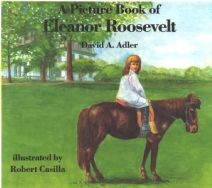As COVID-19 deaths spiked in 2020, Suzanne Firstenberg’s public art installation "In America: How could this happen…"
History Explorer Results (25)
Related Books (23)

Grade Range:
K-4
Resource Type(s):
Worksheets
Date Posted:
10/18/2010
Make your own American eagle pop-up and review symbols with students using this resource, developed by the Smithsonian Institution Libraries for the exhibition Paper Engineering: Fold, Pull, Pop, and Turn.

Grade Range:
K-12
Resource Type(s):
Reviewed Websites
Date Posted:
6/7/2010
This blog, published by the Smithsonian Asian Pacific American Program, includes reviews of book written by or about Asian Pacific Americans. The books range from children's picture books to adult fiction and nonfiction to manga, and the reviewer makes special note of whether the book is presente

Grade Range:
5-12
Resource Type(s):
Reference Materials
Date Posted:
10/11/2009
Students will learn about Thomas Edison's life in the years after he had become one of the most famous men in the world. At the age of 40, with major inventions behind him, Edison faced a new technical world, which he had helped to create, and the challenge of competing with his ow

Grade Range:
K-12
Resource Type(s):
Artifacts, Primary Sources
Date Posted:
9/20/2009
Mariachis, groups comprised of vocalists, trumpeters, violinists, and various bass and guitar players, are today considered Mexico's traditional musical ensemble. Originally from the state of Jalisco, mariachi music transformed itself from a regional to a national music between the 1930s and 1950

Grade Range:
K-12
Resource Type(s):
Artifacts, Primary Sources
Date Posted:
9/17/2009
The civilizations of pre-Hispanic Mexico recorded their histories, religious beliefs, and scientific knowledge in books called codices. Codices are folded pieces of hide or bark that depict both mundane and spiritual scenes with images, symbols, and numbers. Scribes and painters busily recorded d

Grade Range:
K-12
Resource Type(s):
Artifacts, Primary Sources
Date Posted:
6/4/2009
The Battle of the Sewing Machines" was composed and arranged by F. Hyde for the piano, and was published in 1874 by Wm. A. Pond & Co. of 547 Broadway, N.Y., N.Y. The lithograph by R. Teller of 120 Wooster St., N.Y., N.Y., illustrates a "battle" of sewing machines. The Remington "army" is marc

Grade Range:
K-12
Resource Type(s):
Artifacts, Primary Sources
Date Posted:
4/16/2009
This photograph of a blue ash tree is one of forty-nine framed black and white photographic prints bequeathed to the Smithsonian by William F. Bucher of Washington, D.C. The collection represents a labor of love for Bucher, a cabinetmaker, who framed each photograph in wood of the same species as

Grade Range:
K-12
Resource Type(s):
Artifacts, Primary Sources
Date Posted:
3/5/2009
This embroidered mourning picture was embroidered in Lititz, Pennsylvania, about 1816, using silk thread, silk chenille, gold spangles, watercolor, and ink on silk fabric. In a gilded wood frame, it measured 25" x 25", and its black mat is reverse-painted on the glass. Mourning designs appear in

Grade Range:
K-12
Resource Type(s):
Artifacts, Primary Sources
Date Posted:
2/19/2009
Although introduced by Spanish settlers, the island's carnival celebrations, like mask making, music, and public performance, have developed into uniquely Puerto Rican traditions that also reflect the customs and sensibilities of Puerto Ricans' African ancestors. This carnival mask pictured here

Grade Range:
K-12
Resource Type(s):
Artifacts, Primary Sources
Date Posted:
2/19/2009
Carnival celebrations featuring performers dressed as devils are found in Puerto Rico and the rest Latin America. The presence of these characters during Carnival is understood by many as an ancient reference to the contest between good and evil. The devilish mask pictured here was made for the



















